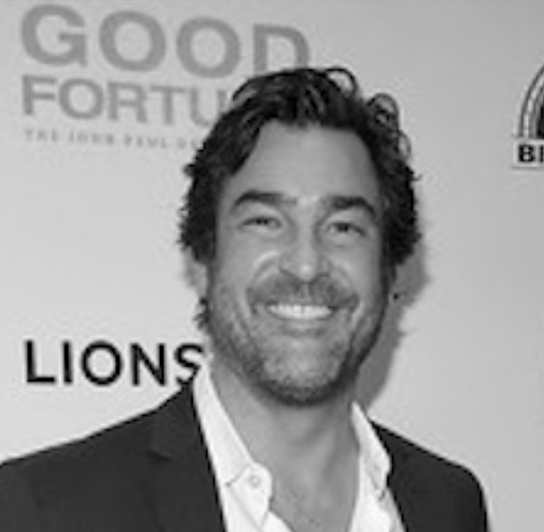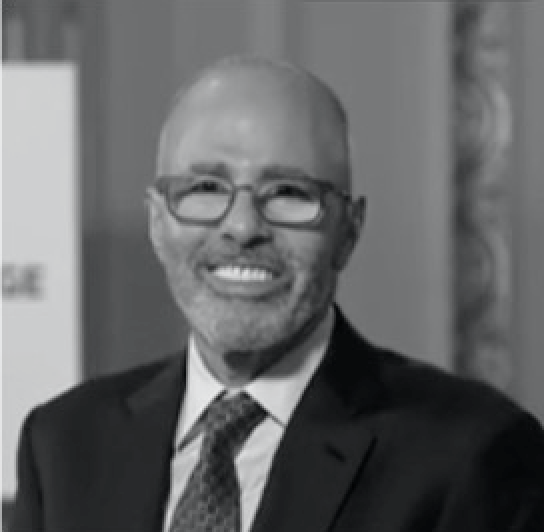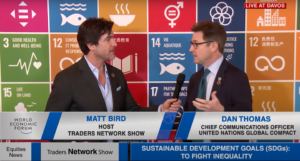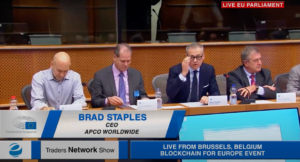Morad Fareed, Dr. Jie Zhao, Alison Tracy, Dr. Ana Langer, and Jennie Joseph Deliver Humanity 2.0 Lab Presentation at the Vatican | Traders Network Show – Vatican City
Contributed by: Show Editorial Team
Humanity 2.0 Lab Presentation was delivered by Morad Fareed, Dr. Jie Zhao, Alison Tracy, Dr. Ana Langer, and Jennie Jospeh at Humanity 2.0 (Vatican City)
HIGHLIGHTS
- 8% of women will suffer from PTSD during pregnancy
- 90% of our time is spent indoors
- Between 2000-2017, maternal mortality rate dropped by 38% worldwide
FULL COVERAGE
INTERVIEW TRANSCRIPTS: Morad Fareed, CEO of Humanity 2.0 Lab, Dr. Jie Zhao, EVP Head of DELOS Lab at DELOS, Alison Tracy, Associate at IHME, Dr. Ana Langer, Dean Special Initiatives at Harvard T.H. Chan School of Public Health, and Jennie Joseph, Executive Director at CommonSense ChildBirth
Morad Fareed – CEO, Humanity 2.0 Lab: 00:00
This presentation is a summary of a white paper, which we’ve developed as I mentioned, six participating organizations. The contributors were extremely privileged and lucky to have had are Dr. Jie Zhao from Delos labs. Formerly the head of the well living lab at the Mayo clinic. Alison Tracy of the IHME behind me one of the global leaders of health data and metrics, Dr Ana Langer, who you’ve just heard about the wonderful leader of the woman’s health initiative at Harvard and the maternal health task force and Jenny Joseph, the founder of common sense childbirth and one of the most respected midwives. And frankly a hero to many of us and myself. I have the real privilege of having cofounded three of these organizations and sitting in the middle of kind of all this knowledge and being the architect of trying to figure out how to pull it together.
Morad Fareed – CEO, Humanity 2.0 Lab: 01:00
So the lab you’re about to hear about is our third lab project. Our first was developed at the Mayo clinic in 2015. The premise was very simple. We were looking to build a global public health movement around building healthier buildings. It was a challenge because real estate is the world’s largest asset class. It’s $22 trillion and nobody knew who we were, so we had to be creative and we needed a new vehicle to develop standards to lead on science and to also change the narrative. In other words, to be a catalyst, you will hear more about the lab’s impact shortly, but the Humanity 2.0 Lab takes this same working model and applies it to our challenge today, which is how do we raise the bar for maternal health? Currently, maternal health is defined by terms like infant mortality and maternal mortality. Ideas of survival, meaning if you survive birth, it’s healthy, but if you expand your perspective over a life course, you’ll ask a much different question, which is about human flourishing.
Morad Fareed – CEO, Humanity 2.0 Lab: 02:21
When you do expand that, you start to look at other determinants. So the largest slice of the pie here, as you’ve heard Michelle talk about in a holistic term, is the environment. The environment contributes to our health and wellbeing more than any other determinant, more than your genes, more than your behavior and more than your doctor. So we’ve decided to actually look at the largest determinant and connect it to the most important period of time. This topic has received endless coverage and while it is much needed, it is also frustrating to be honest because we keep saying the same thing in different ways. Nine months determine the rest of your life. There’s many different terms for this developmental programming or fetal origins of adult disease. But the point is everything that you experienced as an adult can be mapped or is being mapped to the nine months in the womb.
Morad Fareed – CEO, Humanity 2.0 Lab: 03:27
An example you’ve heard Michelle talk about is toxic stress. So I spent a year and a half at a lab at Columbia medical school called the perinatal pathways lab. This lab’s primary function was to study the effects of chronic stress on fetal brain development. And the summary is chronic stress during the pregnancy period basically creates chaos. And what you’re seeing is not just that the hormone of stress is shared with baby, but the anatomy of the baby’s brain actually changes. The frontal lobe shrinks due to the stress hormone. You have many other correlations here. My colleague Jenny Joseph coined the term “maternal toxic” that captures this. And what you’re seeing on the left are exposure types. And again, as Michelle said, it’s not just things like poor air quality, it’s things like racism, it’s social determinants, it’s chemicals, it’s water, it’s neighborhood, it’s socioeconomic status. All of these things comprehensively that have lifelong impact on mother, which you’ll hear about in, in greater detail and child. And many of these things are actually intergenerational as well. I want to quote our illustrious chairman, father Philip. When we founded this organization in January, we had a shared frustration with kind of short term thinking on many of these challenges. And he basically said we need to do the real work and build the institutions on maternal health. Just to know we are flooded with initiatives and the real work is to connect the dots.
Morad Fareed – CEO, Humanity 2.0 Lab: 05:14
So here are us connecting the dots of a healthy pregnancy and a healthy environment. On the left you have individual health factors that contribute to a healthy pregnancy and on the right you have things like social environment, physical environment, building environment and policy environment taking comprehensively. This is what we think are the dots that need to be connected. The Humanity 2.0 lab is the first to optimize the overall environment during pregnancy to improve outcomes for women and babies. So practically speaking, what will it do? It’ll translate science, it will develop the gold standard for healthy during pregnancy. As Matthew talked about, we’ll work with industry to develop toolkits and critically we’re going to do the capacity building work, which is very important in building any kind of movement. We’ll do that by engaging important organizations and training their individuals. And last, it’ll be a distribution platform for the best in class tools and services.
Morad Fareed – CEO, Humanity 2.0 Lab: 06:24
Here are the four steps of the lab. Basically we’re going to measure environments for toxicity. We’ll then develop toolkits based on that unique environment. As I mentioned, we’ll capacity build and then the key function at the end is distribute. As Matthew said, working with everybody. We’re a secular organization, but we do seek collaboration with these types of stakeholders. So that’s the faith sector, governments and courts. So here’s the lab. From a bird’s eye view, you have four sections. One is a workshop, the other’s an office, the classroom for capacity building, and the conference room where we’ll do our partnerships and ecosystem builds.
Morad Fareed – CEO, Humanity 2.0 Lab: 07:21
This is our lobby. The principle of this is it’s meant to be open to the public. It’s not meant to be a lab that’s walled behind a clinic. This is going to be based here in Rome. It’ll be 5,000 feet. It’ll be in a prominent setting. And the point is to engage the public here. So we’re going to be showing the best in class tools in the world that’ll better support mothers during pregnancy. It’s basically an education opportunity and an engagement opportunity here will be where we actually develop our toolkits. As I mentioned, we’ll be working with the best technology and science organizations of the worlds with leading programs that we can integrate. You’ll see some things that will roll in like an environmental dashboard. But the premise is we’ll collaborate to make toolkits next. This is a view of our classroom. This is where we’ll engage organizations to train and capacity building certified professionals.
Morad Fareed – CEO, Humanity 2.0 Lab: (08:24):
And here you have something which you’ll hear about, which is a maternal health Atlas tool, which helps us track and measure global standards and metrics throughout pregnancy. I’d like to pass to my colleague Jie now from Delos labs.
Dr. Jie Zhao – Executive VP Head of Delos Lab, Delos: 08:45
Thank you. Morad. How can a lab become a vehicle to deliver the movements, to power the movement? Here’s the how we’ve done this. I think about this. We spend 90% of our time indoors in our offices, in our homes, in the hotel rooms. Well, we don’t pay too much attention our building environments. So as we all know, the built environment together with the social environment in our behavior that happens in doors has the biggest determines our health and wellbeing. So think about those two things. You spend 90% of the time in doors that has the biggest determines on your health. So we want to power this through the built environment on health, how? Delos together with the welding lab. We created the well building movements, we created the standards, the covers, the built environment, your air light, water, thermal acoustic plus your behavioral and social environments and what you eat on your interactions with the community.
Dr. Jie Zhao – Executive VP Head of Delos Lab, Delos: 09:57
Your psychological effect. All of this is captured through the well building standard. We launched the standard in 2014 and over the past five years the standards has been adopted in more than 50 countries, over 300 million square foot after United States that have already impacted 1.6 million people. And how does this happen? Because we created a program to certify to accredited professionals. There are more than eight, well close to 8,000 people around the world in 81 countries who are the best advocates, the best professionals, the best tours on the ground to deliver these woven standards projects throughout the world. And the engine behind the whole thing is the lab called the well living lab. It is a collaboration between telos and Mayo clinic. As you may know, Mayo clinic is one of the top hospital and medical school in the United States. It was funded by mother Mary Alred Moe’s one of the sisters very famous in the United States and it’s the top hospital institution in the US maybe in the world. And we leverage the scientific and health value of the hospital together with the building science, with the technology of Delos, creating the lab to be the voice of the industry, to power the movement and also to bridge the gap between the scientific community and the industry.
Dr. Jie Zhao – Executive VP Head of Delos Lab, Delos: 11:50
So since the founding of the lab in late 2015 over the past three and four years, we’ve been recognized by academics, by industry, by general public. So it becomes the top authority on indoor health, how your built environment, how your home, how our office can have a positive impact on your health and wellbeing. And we move beyond develop an industrial road. So we’re building a second lab and it’s close to finish in China to cover the Asian population, which is one of the fastest growing continents of the earth. We wants to know what are the health impact differently from the Western road in the United States. Also wants to impact the fast urbanization of Asia. So this lab will open in Q4 this year and you’re all welcome to visit our lab in Beijing, also in Rochester, Minnesota in the United States. I’ll pass this to Alison.
Alison Tracy – Associate, IHME: 13:12
So I’m Alison from the Institute for health metrics and evaluation and the Institute for health metrics and evaluation or IHME is how I’ll refer to it from now on. Coordinates the global burden of disease study, which is a comprehensive effort to measure health loss across different places over time, covering all conditions and maternal disorders being one of those. In the decade leading up to 2017, maternal mortality has declined by 24%, but still there are nearly 200,000 mothers who die due to childbirth or pregnancy every year. And as collaborators contributing to lab 2.0 our role is to ensure that empowered by data, we can use those data to then create an identify action to help improve mothers lives and afford their opportunity for their children to thrive as well. So we have developed recently the maternal health Atlas, which is an online tool to help understand the state of maternal health and how we can start to define the efforts to improve progress and mothers lives overall.
Alison Tracy – Associate, IHME: 14:49
One of the measures that IHME uses with the global burden of disease is called disability adjusted life years, which measures the years of life lost due to premature death or living in less than optimal health. So we not only look at maternal deaths, but we look at mothers who are living in pain with illness or other disabilities due to childbirth. Nearly 12 million years of healthy motherhood have been lost due to pregnancy and childbirth complications in 2017 and this just gives you a snapshot in rate per 100,000 of where the burden really is and that can help the lab and those who are taking action to help improve motherhood outcomes. Really start to focus the efforts.
Alison Tracy – Associate, IHME: 15:48
And then drill down into more information and understand the, what is going on in these locations. By looking here, I’ve taken a snapshot of Brazil that you can look at the population of women of childbearing age, which is 10 to 54 in that country. What is the GDP per capita, how many years of education does an average mother have? And then the fertility rate, all contributing factors to maternal outcomes. And then you can also compare locations to see who is succeeding, where lessons that we can pull from and learn to improve maternal outcomes and where places where we really need to start focusing the efforts. Here you can see China, maybe an example for a learning example for places like the United States or Brazil.
Alison Tracy – Associate, IHME: 16:53
We also look at what’s driving changes in mortality. So here you’re looking, the black dots are showing you the overall change between 2017 in maternal mortality in different locations. Globally, maternal outcomes have improved by 37% between in those 17 years. And it’s mostly driven by a decrease in maternal mortality ratio, which is really looking at the safety of health providers and the access to care. And then obviously you can see how population growth may be pulling maternal mortality and in the opposite direction for other locations. You can also look at what is, again, we’ve talked about maternal mortality, but then if a mother survives childbirth, is she living in pain or not being able to serve as the healthy mother that she should be afforded the opportunity to do. And really what is contributing to that illness or pain or disability in different locations. And here you can see that maternal obstructed labor and uterine rupture since 1990 really has not changed. And as one of the leading contributors to maternal disability long-term.
Alison Tracy – Associate, IHME: 18:36
So this side is flipped. We can skip this slide, but we look at observed versus expected. In countries Brazil has actually been performing much better than they would be expected according to their economic development scale. And so if you flip the lines and read this opposite, we’ll look at the US on the other hand on the next slide. Yeah. That’s performing much worse than other countries with similar economic and education outcomes. So we continue to get worse than you would expect the United States to be. So how can we start to identify those areas of concern and problems that can change and bring those two lines together and really bring the observed better than we would even expect. So the, I think the reason we’re all here is that all women deserve a healthy pregnancy and safe childbirth and children deserve to live with healthy mothers. We’ve made a lot of progress in maternal mortality, but there’s still work to be done. And I think the lab using data to start identifying the problem and then moving that into action and identifying areas where we can really start to make improvements is an exciting opportunity and reason that we’re here. And I think Ana is now going to speak to more of the action part.
Dr. Ana Langer – Dean Special Initiatives, Harvard T.H. Chan School of Public Health: 20:26
Hi everyone. Thank you so much Morad, for bringing us all together. It’s wonderful to be here and enjoying these very, very important conversation in this amazing environment. So it’s a, it’s an honor to be talking with you about one of the key priorities of us working in global maternal and child health. As Alison just said, there has been significant progress in terms of maternal health over the last three decades, mostly maybe the last 15 years, but still there is a lot of work to be done because the program, the progress has been uneven for many years. Those of us working on maternal health have focused on increasing access to maternal health care in institutions. Considering that when women has have access to a significant maternal health, a skilled maternal health care, their health would improve as the health of their children and that they would be able to strive.
Dr. Ana Langer – Dean Special Initiatives, Harvard T.H. Chan School of Public Health: 21:36
While access is definitely still a problem, as you can see from this photo, these men carrying woman on his back, there has been significant progress in terms of the number of deliveries that currently happen in an institutional setting. That has been in great part because many countries, large countries like India, Mexico, Brazil, Kenya have introduced policies that guarantee free delivery in institutions to all women. But to our surprise, those increased numbers of institutional deliveries. Didn’t necessarily lead to better health outcomes for the mother and the baby. So what we had bought resized is that the lack of significant improvement is because of the poor quality of care women receive in the institutions where they go to deliver. So this is a photo from a country where more than 90% of women they live are in healthcare institutions.
Dr. Ana Langer – Dean Special Initiatives, Harvard T.H. Chan School of Public Health: 22:50
I don’t need to tell you why this is a setting where quality of maternal healthcare is poor. It’s pretty obvious and this is definitely not one of the institutions where the quality of care is poorest. I could have shown you more dramatic photos than this one is. So although there are multiple efforts going on these days to understand the factors behind poor technical and your personal quality of care and many interventions are being tested to improve quality of maternal health care, we also need to think of new paradigms to move the maternal and the child health agenda forward. So one of them is the life cycle approach that Morad referred to.
Dr. Ana Langer – Dean Special Initiatives, Harvard T.H. Chan School of Public Health: 23:41
Basically the life course approach, looks at health as a continuum instead of looking at health divided by a stages, those are completely artificial silos. It looks at health from pregnancy through the end of our lives and the next generation and of course there are biological and social factors that affect health and wellbeing throughout the life course. Many of these periods offer particular windows of risk and opportunity and pregnancy is one of them. Why is pregnancy a period of risk? Because a pregnancy basically means a stress test for the mother. Sometimes conditions that have not been clinically apparent until pregnancy like hypertension become symptomatic during pregnancy and put the life of the mother and the health of the baby and sometimes the life of the baby at risk, sometimes other conditions that are common during pregnancy like gestational diabetes, it also represent a risk for the mother in later stages of life because women who have gestational diabetes are at an increased risk of developing type two diabetes.
Dr. Ana Langer – Dean Special Initiatives, Harvard T.H. Chan School of Public Health: 25:00
The chronic kinds of diabetes only a few years after a pregnancy. And in the case of the babies using my two examples, a hypertension of the mother, it will probably lead to a small baby for his or her gestational age. And that represents a big risk for his or her newer development and for his or her health in general. And gestational diabetes also translates into complications for the baby that can have short, mid and long-term implications for the life of that new individual. But also pregnancy represents an important opportunity for many women, particularly the most vulnerable ones, like the ones I show you in the photos before pregnancy is the time when they are more likely to get healthcare. So this is the perfect time for a provider to educate women about health related behaviors for herself and for her family about her risks, about how to identify, eh, any complications and a also an opportunity to prevent, to early diagnose and to treat any of the obstetric complications of the noncommunicable diseases that may be affecting women during pregnancy. So what do we need to do to help introduce the life course approach into clinical services? We need to give healthcare professionals some tools.
Dr. Ana Langer – Dean Special Initiatives, Harvard T.H. Chan School of Public Health: 26:41
So I’m just going talk briefly about one example and a well in the white paper that we wrote with Morad and many other colleagues here, there are more examples. The toolkit that I want to refer to was developed a by a project called inter growth 21st century. And it’s a very, very robust evidence-based toolkit that allows to estimate very accurately gestational age weight gain of the mother during pregnancy. The, it also includes growth standards for the fetus and for the newborn. It introduces a new regimens for the nutrition of the preterm and term babies based on breast milk. And it also includes a simple way to test neurodevelopment at two years. So these are tools that have been developed by hundreds of researchers and multi disciplinary team of researchers. And we at Harvard Chan are a key partners of this effort and have already been introduced in many hospitals around the world, but still more needs to be done by introducing the standards. We not only help to achieve good health outcomes for the mother and the baby immediately postpartum, but we also prevent and promote health while the life cycle in particular, we prevent conditions that are associated with overweight and obesity for instance. And we also promote a positive development. So the inter growth tools have already been disseminated in a large number of countries, but again, much more needs to be done, but we cannot do anything in an isolated way. We need to build partnerships like the one that hopefully will start today because only we all work together. We will be able to overcome these monumental challenges that we are still facing and make true the commitment that we all have, which is to make motherhood and a child health safe and enjoyable and positive for all women and children everywhere. Thank you very much.
Jennie Joseph – Executive Director, CommonSense ChildBirth: 29:22
Well, good morning everybody. Morning. My name is Jennie Joseph. I’m a midwife and I’m really glad to be here. Thankful for the opportunity to share a little bit with you this morning. I want to talk about my work. I am located in Orlando, Florida, but you can tell I’m not from there. Right. I went to Disney World and the rest is history. 30 years in the United States. Yeah. Don’t go to Disney. So if you know anything about midwifery, you know that midwives deliver women who are expecting a healthy, normal birth and they take care of the straightforward case in the rest of the world. Most of the weld midwives are the primary caregivers for pregnant women. That’s not the case in the United States. But I’ve been there, like I said, 30 years. And I’ve learned that while I’m working inside of that environment, which I find for the most part is a maternal toxic environment. That the one thing that has mitigated that for the women, at least in my care, has been applying the midwifery model of care.
Jennie Joseph – Executive Director, CommonSense ChildBirth: 30:31
I work predominantly with black women in Orlando. The reason being is that black women as Dr. Williams told us earlier are suffering disproportionately from poor outcomes as far as their health. We learned that very quickly once we knew the data and once we understood what was happening that we had to act. So we’re working from an action based initiative. This is a group of women who are having a home visit from one of my health workers. I had to figure out how to move the needle with the people that we could afford and we found that it was much easier and much more effective to work with women who appears, who are paraprofessionals, doulas, childbirth educators, lactation educators that we trained ourselves and we deployed and we were able to work very quickly and to make the difference. If you look at the overall picture, United States like the rest of the world is trying to eliminate health disparities, talking about health equity. Our goals for 2020 where to actually achieve health equity. Really lofty goals but it’s 2019. So we have to wonder what are we doing here.
Jennie Joseph – Executive Director, CommonSense ChildBirth: 31:45
If you put it really simply, our babies are dying twice as many black babies are born too soon, too small, too sick. Our neonatal intensive care units are full of black and Brown babies. Women are dying. That’s what we’re talking about today. Women are dying and when we talk about the ones that actually die, that number in and of itself is quite alarming. But the ones that nearly die 50,000 or more annually, and I always ask people to consider the majority of the women that have been harmed or suffering or have postpartum depression. I’m not speaking out so they aren’t even included in that number. Keep that in mind and speaking to you as families, people who have families, mothers who are in the room, you may know what I’m talking about. There’s a part of this work where we keep our secrets.
Jennie Joseph – Executive Director, CommonSense ChildBirth: 32:37
We keep this information ourselves. It’s too painful to talk about. So when we talk about maternal toxic zones, we’re not just talking about the actual environment. I’m talking about the fact that wherever you are, that zone could pop up. That environment could pop up around you. Serena Williams story is a great example of that. She was in a hospital, but she was I think a victim of a maternal toxic situation in that nobody listened. That’s a barrier and it travels with you, whoever you are, wherever you are. So we’re looking at women suffering in pregnancy, but postpartum is a big deal. Postpartum depression, postpartum mood disorders, lack of support. And then also keep in mind the mother baby pair. The mother baby is a dyad and has to be considered together.
Jennie Joseph – Executive Director, CommonSense ChildBirth: 33:39
So in Orlando we utilize the midwifery model of care. I’ve named it the JJ way cause I couldn’t really come up with anything better. And I’m Jenny Joseph. So the birthplace is a birth center. We have easy access women’s health clinics. We run clinics in English, in Portuguese and in Spanish. And we make sure that we being the most marginalized women into care immediately. There’s no barrier to care. This was one of the quickest fixes a pregnant woman presents. We take care of her. It was that simple. We also realized we’re doing trauma informed care and our goal is not to retraumatize the mother, not to add to her already existing trauma and fear pain because she’s not likely getting anywhere else where she’s being respected, where she’s been heard, where she’s been listened to, where she’s being treated with dignity. So even though we often run to talk about the developing nations, I want you to keep in mind that in developed nations we have the same problems.
Jennie Joseph – Executive Director, CommonSense ChildBirth: 34:35
Hence we’re seeing these same outcomes. So we provide care from a compassionate, culturally sensitive, nonjudgmental approach. We work with what we had and we figured out that what we could do would make a big difference. We create what I call the perinatal safe spots. This is the word. This is the training we train providers on how to create a safe spot immediately, wherever you are however you are, whatever environment you’re in, can you create safety that will protect this mother, this mother baby pack. We do this by providing immediate access, unrestricted access, connecting to the mother in supporting the mother, connecting to her baby as well. So many women are scared. They might lose their child that they actually won’t even connect to the baby during the pregnancy. Once they connect and they feel comfortable, we can provide all the knowledge and information they need and we ended up with the empowerment.
Jennie Joseph – Executive Director, CommonSense ChildBirth: 35:30
Here’s another thing I learned along the way. Do the same thing for the staff. Simple. When the staff feel engaged and encouraged to share their ideas and their thoughts, they provide the best possible care, the best level care. These are the women that work with us in the clinic. They’re directly into this field. They’ve been trained on the job. They are cost-effective providers of supportive care for women and babies and the outcomes speak for themselves. This is a comparison about outcomes from the 2006 2007 timeframe in orange County, Florida, but we were able to literally eradicate preterm birth and all in our cohort gone. I’m not talking dropping a point here, a point there. I’m talking about there were no preterm babies born, but we compared to our local area, the state of Florida at that time for black women had a 21% preterm birth rate. One in five, one in five. Our County was at 19.5. We had not one be comparing like to like there’s something about just providing humanistic, compassionate support. It’s not always about the medicine.
Jennie Joseph – Executive Director, CommonSense ChildBirth: 36:53
This is what it looks like. How often do you see pictures of black women thriving? Women? Healthy, glowing. This was just a small group of the women and the staff. We had a little gathering where we do a lot of that kind of work. We just share, here’s a picture of some of the babies that we’ve delivered that the clinics over the last few years. And what we know is that when you stop long enough to center a woman’s center, her and the baby center, her family provides safe, respectful, human, compassionate care. Every time you win, every woman counts. Thank you.
Morad Fareed – CEO, Humanity 2.0 Lab: 37:50
Thank you very much everybody. In conclusion, our lab is an engine that will connect all these dots and in one integrated way translate a lot of these insights and brilliant expertise into practical actions that affect moms and babies in the real world. So thank you very much. And we hope to talk soon.
For link to original article, click here
All rights reserved to the Traders Network Show. No part of this publication may be reproduced, distributed, or transmitted in any form or by any mean including; photocopying, recording, or other electronic or mechanical methods, without prior written permission of the publisher, except in the case of brief quotations embodied in critical reviews and certain other noncommercial uses permitted by copyright law. For permission requests, write to the publisher addressed “Attention: Permissions Coordinator”








